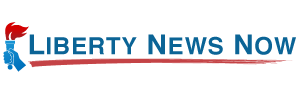President Barack Obama signed a new Executive Order this week that authorizes federal agencies to conduct behavioral experiments on U.S. citizens to better manipulate them and advance government goals. The executive order reads in part:
“A growing body of evidence demonstrates that behavioral science insights – research findings from fields such as behavioral economics and psychology about how people make decisions and act on them – can be used to design government policies to better serve the American people.”
Interpretation?
All federal agencies from the Social Security Administration, the Environmental Protection Agency and the Internal Revenue Service to ObamaCare, Medicare and Food Stamps – have a green light to do whatever needs to be done to manipulate, trick, fool or defraud the American people as long as you’re “Strengthening Federal Capacity for Behavioral Insights.”
The idea of this “lab rat” program is modeled after one implemented in the Great Britain – a socialist economic basket case – in 2010. The British effort led to “Behavioral Insights Teams” which used “iterative experimentation” to test “interventions that will further advance priorities of the British government.”
In science, “iterative experimentation” is a technique used to change behavior through repetition – to move “lab rats” or, in this case, people closer to a desired result… destigmatizing Food Stamps… use “fairness” to justify unemployment benefits… turn ObamaCare into an entitlement… accept bureaucratic regulations as “law” – you name it.
Even more sinister is the author of treating people like “lab rats” – Harvard law school professor Cass Sunstein – who doubles as Obama’s handpicked regulatory know it all. According to Sunstein, you can “nudge” citizens towards certain behaviors and choices the government likes and away from public policies that government doesn’t like (less government, lower taxes, entitlement reform and conceivably voting).
In a 2013 memo, discovered by and reported on Fox News at the time, the White House admitted that the initiative involved behavioral experimentation. The memo reads, in part:
“The federal government is currently creating a new team that will help build federal capacity to experiment with these approaches, and to scale behavioral interventions that have been rigorously evaluated, using, where possible, randomized controlled trials.”
The memo cited a practical application of behavioral manipulation in Great Britain. The English learned that sending out a letter to late taxpayers that read “9 out of 10 people in Britain pay their taxes on time” led to a 15 percent increase in compliance.
The new executive order encourages federal agencies to:
“…identify policies, programs, and operations where applying behavioral science insights may yield substantial improvements in public welfare, program outcomes, and program cost effectiveness,” as well as to “develop strategies for applying behavioral science insights to programs and, where possible, rigorously test and evaluate the impact of these insights.”
To jump-start the program across government agencies, administrators are encouraged to recruit behavioral science experts to join the federal government to “better use empirical findings from the behavioral sciences” to manipulate the choices people make and the opinions people have when dealing with government.
The president’s “lab rat” order specifically directs “agencies to:
• Identify opportunities to help qualifying individuals, families, communities, and businesses access public programs and benefits by, as appropriate, streamlining processes that may otherwise limit or delay participation – for example, removing administrative hurdles, shortening wait times, and simplifying forms;
• Improve how information is presented to consumers, borrowers, program beneficiaries, and other individuals, whether as directly conveyed by the agency, or in setting standards for the presentation of information, by considering how the content, format, timing, and medium by which information is conveyed affects comprehension and action by individuals, as appropriate;
• Identify programs that offer choices and carefully consider how the presentation and structure of those choices, including the order, number, and arrangement of options, can most effectively promote public welfare, as appropriate, giving particular consideration to the selection and setting of default options; and
• Review elements of their policies and programs that are designed to encourage or make it easier for Americans to take specific actions, such as saving for retirement or completing education programs. In doing so, agencies shall consider how the timing, frequency, presentation, and labeling of benefits, taxes, subsidies, and other incentives can more effectively and efficiently promote those actions, as appropriate.”
One program, Obamacare, is replete with “nudge” language and experimentation. In a fact sheet that accompanied the Executive Order, the White House noted that reminding individuals who had started to sign up for Obamacare led to a 13 percent increase in completed applications.
To help determine which presentation was more effective, the Department of Health and Human Services:
“…sent one of eight behaviorally designed letter variants to each of more than 700,000 individuals who had already begun the health insurance enrollment process but had not yet completed an application.”
The most effective version of the letter generated the 13 percent improvement. Other less effective letters only increased enrollment rates by around four percent. How these experiments improve the lives, expand the freedom and promote the happiness of the American “lab rats” was not addressed by President Obama’s Executive Order.





























